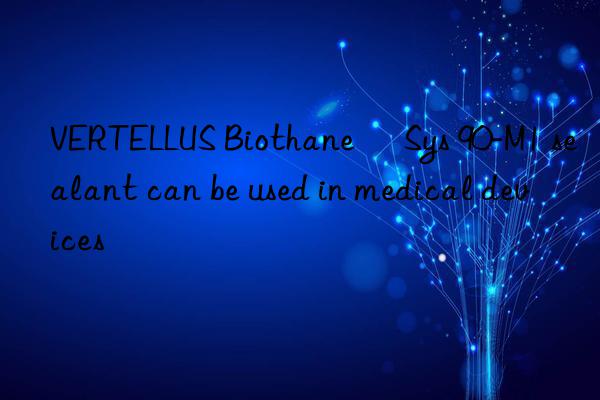
Product Introduction
Biothane® Sys 90-M1 is a two-component polyurethane liquid casting sealant based on ricinoleate. It has excellent mechanical properties and high impact strength, and the Shore hardness can reach 70D. The system contains no TDI, aromatic amines or non-reactive diluents. Can be used for cartridge filters such as dialyzers, and sealing of medical equipment.
Product Features
· Yes Resistant to sterilization conditions
· Yes Excellent wetting and adhesion to various substrates
· Excellence strength and mechanical properties
highlights Hydrolytic stability
· Low Shrinkage
Apply
As a sealant for cartridge filters: hemodialyzers, oxygen injectors, Blood concentrators, bioreactors, water purifiers, etc.; and medical equipment: heat exchangers, cardiac arresters, neuromodulators, urethral catheters, etc.
★ As adhesive, for film Material: Cellulose, polysulfone, polyacrylonitrile, polyethersulfone, polypropylene, etc.
★ As a coating, for substrates: polycarbonate, polyester fiber, stainless steel, etc.
Processing characteristics
Biothane® Sys 90-M1 is a two-component sealant, which needs to be mixed with polyurethane prepolymer component Vorite® 689 and polyol component Polycin® 640-M1 during processing. Its ratio and mixing parameters are shown in the table below.
|
Features |
Typical |
Test method |
|
Mix ratio |
55/45 weight ratio; |
ISO 10993 |
|
hemolysis |
non-hemolytic |
ISO 10993 |
Dielectric properties (sealants)
|
Features |
Typical |
Test method |
|
Volume resistivity (Ω· cm) |
1.5 x 1015 |
ASTM D257 |
|
Dielectric constant (kHz) |
2.9 |
ASTM D150 |
|
Dissipation factor (kHz) |
0.03 |
ASTM D150 |
|
dielectric strength (V/ mil) |
650 |
ASTM D149 |
|
insulation resistance (Ω) |
>10 15 |
Telcordia MS17000 |
Toxicity, handling and storage
Generally, isocyanates can irritate the skin locally, eyes and respiratory tract. When inhaled, they may damage mucous membranes. Although Vorite 689 is a low vapor pressure isocyanate based non-TDI prepolymer, however, proper handling precautions should be strictly followed when using the prepolymer in large quantities. This includes proper ventilation and the use of protective goggles, gloves and an apron. In case of skin contact, remove and wash immediately with plenty of soap and water. Any spills should be covered with wood chips and treated with a dilute solution of ammonia or ethanol (or methanol) in water and water before disposal.
Vorite 689 should be stored above 15℃ (60°F) temperature. If product is exposed to temperatures below this for prolonged periods, crystals may form or freeze. If this happens, melt it by heating to 65°C (150°F) for 1 hour, then stirring well. This action can only be performed once. If product freezes more than once, it should be discarded.
For Vorite 689 and Polycin 640-M1, Exposure to moisture should be minimized. After each use, it should be stored in an airtight container covered with dry air or a dry inert gas.
The above information is only a brief overview and does not necessarily whole. The latest MSDS should be read before using this material.
Toxicity, handling and storage
Generally, isocyanates can irritate the skin locally, eyes and respiratory tract. When inhaled, they may damage mucous membranes. Although Vorite 689 is a low vapor pressure isocyanate based non-TDI prepolymer, however, proper handling precautions should be strictly followed when using the prepolymer in large quantities. This includes proper ventilation and the use of protective goggles, gloves and an apron. In case of skin contact, remove and wash immediately with plenty of soap and water. Any spills should be covered with wood chips and treated with a dilute solution of ammonia or ethanol (or methanol) in water and water before disposal.
Vorite 689 should be stored above 15℃ (60°F) temperature. If product is exposed to temperatures below this for prolonged periods, crystals may form or freeze. If this happens, melt it by heating to 65°C (150°F) for 1 hour, then stirring well. This action can only be performed once. If product freezes more than once, it should be discarded.
For Vorite 689 and Polycin 640-M1, Exposure to moisture should be minimized. After each use, it should be stored in an airtight container covered with dry air or a dry inert gas.
The above information is only a brief overview and does not necessarily whole. The latest MSDS should be read before using this material.

 微信扫一扫打赏
微信扫一扫打赏

